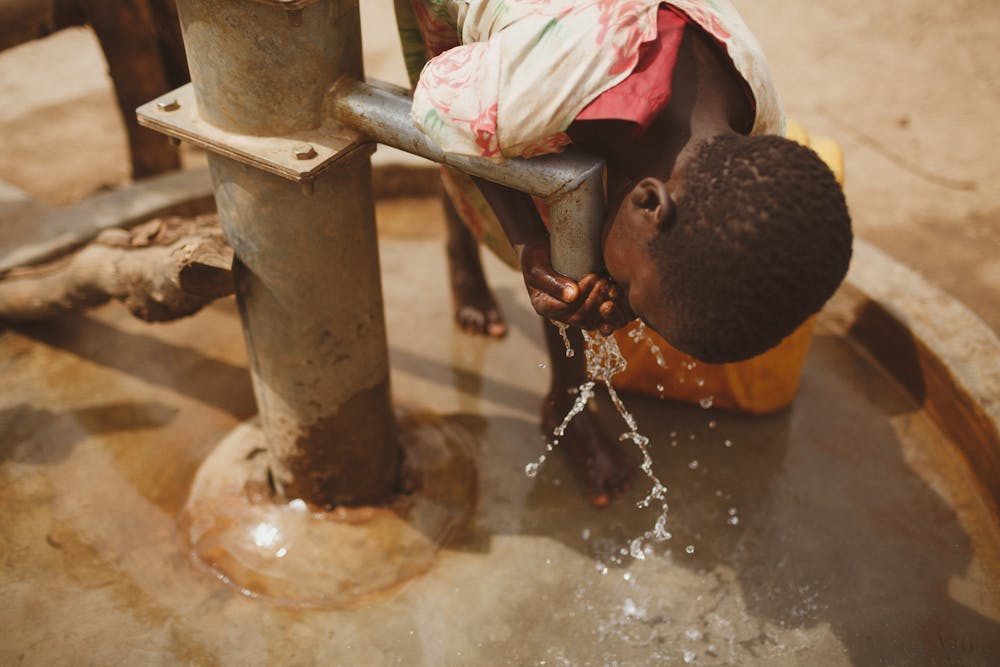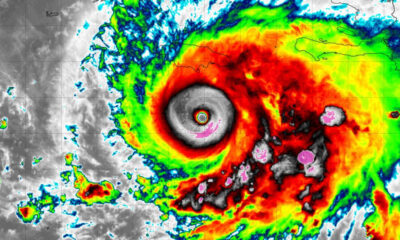Reviews
Which African Countries Benefit Most from Water Donations: Top 5 Nations Receiving Necessary Aid

Africa faces a major water crisis that affects millions of people across the continent. About 40% of Africa experiences water stress, with many communities lacking access to clean drinking water. This shortage leads to health problems, limits education opportunities, and slows economic growth in rural areas.
Several African countries receive significant support through water donation programs, with Ethiopia, Kenya, Uganda, Tanzania, and Nigeria benefiting most from international funding and development projects. These nations have become focal points for water organizations working to drill wells, protect springs, and build sustainable water systems. The impact varies by country based on local conditions, government support, and the types of projects implemented.
Each country faces unique challenges and receives different types of water assistance. Some benefit from well restoration and sand dam construction, while others see improvements through spring protection or community-based solutions that involve local residents in maintenance and operation.
Ethiopia – Large Water Projects Restoring Wells and Building Sand Dams
Ethiopia receives significant water donations to support major infrastructure projects. The country has earned recognition as the water tower of Africa because of its mountain regions and water resources.
Water donation programs in Ethiopia focus on building sand dams in rural areas. These projects help communities store water during dry seasons. Sand dams work by capturing rainwater and allowing it to filter through sand layers.
In southern Ethiopia, communities have rebuilt their livelihoods through sand dam construction. Local people who faced persistent drought cycles now have better access to clean water. These projects help thousands of families escape poverty.
Well restoration projects also receive funding from international donors. These programs repair damaged wells and build new ones in remote villages. About 45% of Ethiopia’s population still lacks access to electricity and clean water.
The country actively works to harness its water resources through various projects. While only 1% of the water potential was used in the early 2000s, donation programs have helped increase this percentage. These projects provide sustainable water services to rural communities.
Kenya – significant improvements through spring protections and maintenance
Kenya has made major progress in improving water access through spring protection programs. These projects focus on protecting natural springs from contamination while providing clean water to rural communities.
Spring protection systems cost around $1,000 per project. Communities contribute 10% of the costs, usually through labor. This approach helps guarantee local ownership and maintenance.
The health benefits are notable. Protected springs reduce typhoid, waterborne diseases, and malaria cases. They also prevent drownings of children who collect water from dangerous sources.
Water quality improvements are significant at the source. Studies show that spring protection can improve water quality by 66% at the point of delivery. However, contamination can still occur during transport and storage.
Western Kenya has many active spring protection programs. The region has plentiful groundwater, making it ideal for these projects. Local communities work with organizations to build and maintain these systems.
The programs also provide environmental benefits. Families no longer need to boil water, which reduces firewood use and deforestation. This creates positive impacts beyond just water access.
Uganda – benefiting from sustainable water well construction
Uganda faces significant water access challenges, particularly in rural areas. Nearly 40 percent of rural communities must travel more than 30 minutes to reach improved drinking water sources.
Water well construction projects have made meaningful progress across the country. Between 2012 and 2018, development programs helped over 1.01 million people gain access to improved water sources. Additionally, 25,000 piped household water connections received rehabilitation during this period.
The Karamoja region in northeast Uganda experienced major improvements through well rehabilitation efforts. In 2022 and 2023, organizations repaired 16 defective wells in this drought-affected area. Local residents like Harriet Ayen benefited directly from these projects, reducing their daily travel time for water collection.
Well construction typically costs around $8,000 per installation. Each well can serve approximately 1,000 people, making it a cost-effective solution for rural communities. These projects help reduce the water burden on women and girls, who often spend up to eight hours daily collecting water.
Recent initiatives include the Busolo piped water scheme in Bugiri District, which began operations in September 2024. Such projects support sustainable development goals while improving public health outcomes.
Tanzania – access increased via community-based water solutions
Tanzania has made significant progress in water access through community-focused programs. Over 4.7 million people have gained access to improved water supplies in less than five years through the country’s sustainable rural water program.
Community-based water management plays a key role in Tanzania’s water sector development. Local water user associations help manage water resources at the catchment level. These groups make decisions about water distribution and maintenance within their communities.
The programs target rural populations who face the biggest challenges in accessing clean water. Additionally, these initiatives focus on marginalized communities and people with disabilities to promote equal access.
Tanzania’s approach combines government support with community participation. The Water Sector Development Program works to reduce economic losses from poor water access by $1.9 billion per year by 2030.
Multiple organizations support Tanzania’s water goals through various community programs. These efforts include educating communities about water resource management and teaching good hygiene practices. The programs also help communities maintain their water systems for long-term success.
Nigeria – supported by numerous initiatives, drilling clean water wells
Nigeria faces a major water crisis despite having many water sources. Around 66 million people lack access to safe water across the country. This creates serious health problems for families and communities.
Many organizations work to solve this problem by drilling wells. Over 18 of Nigeria’s 36 states have received support through loans or grants for water projects. The World Bank, African Development Bank, and USAID provide the most funding.
Saudi Arabia recently announced plans to fund 78 solar-powered wells across Nigeria. This project will help more than 730,000 people in 10 states get clean water. The wells use solar power to pump water from underground.
Several programs focus on both urban and rural areas. The National Urban Water Sector Reform Program works in cities, while other initiatives target rural communities. These programs build wells and improve existing water systems.
Non-profit groups also play an important role. They work with local communities to identify the best places for new wells. Many of these organizations started after 2009 to address the growing water needs.
Conclusion
Water donation programs create the most impact in sub-Saharan African countries where access to clean water remains limited. Countries like Chad, Niger, and Somalia benefit significantly from these programs due to their low water access rates and challenging geographic conditions.
Key factors that determine impact include:
- Population density in rural areas
- Existing water infrastructure quality
- Government support for water projects
International support continues to flow toward these nations because the need remains urgent. More than 300 million people across Africa still lack access to clean drinking water, making targeted donations important for community development.
The countries that receive the most benefit from water donations are those with the greatest gaps in water access and strong community support systems.

-

 US News2 days ago
US News2 days agoJetBlue flight diverts to Tampa after altitude drop injures at least 15
-

 US News1 week ago
US News1 week agoUnwarned tornado suspected in Fort Worth as storms cause damage and power outages
-

 World6 days ago
World6 days agoU.S. Navy helicopter and fighter jet crash in South China Sea; all crew rescued
-

 Legal7 days ago
Legal7 days agoMultiple injured in shooting at Lincoln University in Pennsylvania
-

 US News3 days ago
US News3 days agoTrump says U.S. will resume nuclear weapons testing ‘on an equal basis’
-

 US News4 days ago
US News4 days agoDamage reported in Kilgore, Texas following tornado warning
-

 World6 days ago
World6 days agoMelissa could make landfall in Jamaica as a Category 5 hurricane
-

 Legal4 days ago
Legal4 days ago3 killed in murder-suicide involving Wright-Patterson Air Force Base personnel




